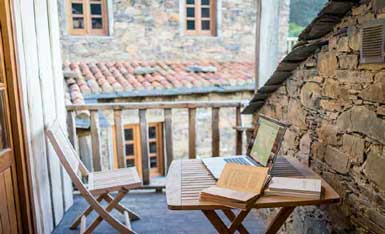
Residências
candidaturas
Num espaço livre de preconceitos ou rótulos sociais, dois indivíduos refletem sobre o estado de monotonia, desconstruindo-o com demonstrações de extravagância, numa dança composta por elementos encenados e simbólicos que comunicam ideias de como por vezes somos incapacitados de realmente observar aqueles que nos rodeiam, e as singularidades que cada um contém. Assim, "Dois Peixes em Marte" procura a aceitação de autenticidade numa sociedade que por vezes desaprova a diferença.
É da natureza do homem esperar. Todos esperamos, tendemos para diante. Somos seres em evolução e essa essência de futuro, modelada em ‘espera’, pode vir a transformar-se em ‘esperança’. “Esperamos pelo autocarro, esperamos por alguém, por um exame e até mesmo pela morte”, palavras de Anselmo Borges, convocadas por Elisabete Magalhães para ecoar algumas das “inquietações” que estiveram na génese do seu projeto Grau Zero, Um Corpo que Espera. “Pesquisa sobre o corpo, imobilidade e silêncio (e as suas possíveis implicações para a dança) ”, este trabalho propõe, em contracorrente à aceleração intrínseca ao nosso quotidiano e à ideia de um corpo objeto, uma paragem e uma escuta do corpo enquanto “sujeito de perceção” de si e do mundo. Instigada pelas declinações do silêncio nas obras de Andrei Tarkovski, Merce Cunningham e Nijinski, a coreógrafa persegue em Grau Zero, Um Corpo que Espera a sua “pormenorização” e questionamento: “Indagar o silêncio para mim implica um estado livre de intenção e simultaneamente um modo de discurso, seja ele político, de resistência ou de urgência.”
Conceção e coreografia: Elisabete Magalhães /
Desenho de luz: Wilma Moutinho /
Vídeo: Elisabete Magalhães /
Interpretação: Júlio Cerdeira, Elisabete Magalhães /
Coprodução: Escola Superior de Musica e Artes do Espetáculo, TNSJ
Um coletivo temporário de três performers investiga como os processos corpóreos e orais são transmitidos através da imaterialidade e do imaginário comum produzidos a partir de várias práticas de dança. A partir de ações de interpretação, adaptação ou contaminação das suas práticas, os performers revisitam e transformam os seus arquivos experienciais em coreografias, ficções ou demonstrações, e convocam o público para um espaço liminar entre a cumplicidade e contemplação.
Cindy Shapiro é uma artista multifacetada com uma valiosa técnica e percurso artístico. Foi artista residente na Cité Internationale des Arts onde compôs a sua primeira ópera inspirada no mito de Psique, Psyche:First Upon a Time. Através deste trabalho, recebeu uma importante bolsa de artes da Tides Foundation.

O balleteatro acolhe residências, para as quais abre candidaturas, pontualmente, em períodos a definir. De momento, não há nenhuma open call a decorrer. // Em momento de inscrições, as residências por concurso têm como objetivo criar uma oportunidade a artistas para desenvolver projetos específicos dentro das artes performativas em condições de imersão criativa. As candidaturas devem referir-se a um projeto concreto de trabalho e devem prever pelo menos uma ação que se possa abrir à cidade. Esta ação não deve ser confundida com uma apresentação final resultante do laboratório em si. Os projetos a concurso devem prever trabalho com pessoas locais a selecionar mediante critérios definidos pelo(s) autor(es) do projeto. O dossier de projeto deve conter: apresentação do projeto; título; área artística; sinopse; biografias dos participantes; calendarização; outros apoios existentes e em que formato; outros elementos considerados relevantes.
Este material deve ser enviado para producao@balleteatro.pt.
A duração das residências pode ser variável em função da especificidade de projetos selecionados. Caso o projeto tenha continuidade no futuro, o balleteatro deverá ser referido como coprodutor.